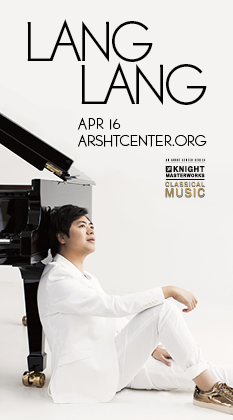Strings to the fore in stellar closing program of PB Chamber Festival
 In the warmth of the summer evening, with the smiles of people waiting to enter the Persson Hall at Palm Beach Atlantic University Friday night, it seemed a bit sad that the eighteenth season of the Chamber Music Festival was already coming to a close.
In the warmth of the summer evening, with the smiles of people waiting to enter the Persson Hall at Palm Beach Atlantic University Friday night, it seemed a bit sad that the eighteenth season of the Chamber Music Festival was already coming to a close.
The concert opened with Camille Saint-Saens Fantasie in A for violin and harp, a work that provided one of those “where has it been all my life?” experiences. The piece is so beautiful, and so well proportioned, that only the offbeat combination of instruments could account for its neglect.
The Fantasie is a substantial work in several sections, written when the composer was a septuagenarian. Mei Mei Luo’s violin was extraordinary, with deep, rich tone, and technical passagework both fiery and emotionally satisfying. The lush harp execution by Kay Kemper must have added some additional calluses to her overworked fingers.
The selection of the neoclassical centerpiece—Alfredo Casella’s Serenata for clarinet, bassoon, trumpet, violin and cello—was an inspired choice. Its Stravinsky-meets-Faure five movements are impeccably crafted, Pulcinella-like in good humor and deviltry, and quite moving in its Notturno and Cavatina movements. Casella studied in Paris and served as conductor of the Boston Pops in pre-Fiedler days, and fully absorbed the cheeky sophistication of the times. Needless to say, the performance was enjoyable, and probably great fun for the enthusiastic instrumentalists to play.
Turning to the contemporary American Jan Bach and his Music for a Low-Budget Epic was to encounter a totally unsophisticated attempt at humor. Mr. Bach uses just two instruments, piccolo and bassoon, to relate the four comically titled movements of his suite. In one of these, Romanza (Nocturnal Love Scene on a Balcony), the piccolo leaves the stage to play what sounded like bird twitters from the wings, while the bassoon plays both protagonists in the love scene. It was a long—very long—love scene, and Bach’s entire work seemed to go on forever. Karen Dixon twitted admirably on the piccolo, and Michael Ellert handled the high tessitura on his bassoon with his usual skill and good humor.
Ending the program was a performance of Mendelssohn’s String Quintet No. 2 in B-flat—at last! This is a late, rarely performed work, and hardly deserves the relative obscurity it has received. The style is far distant from his earlier, and lighter, Op. 18 Quintet, with a dramatic bite and strong propulsive rhythms, reaching an almost symphonic scale in the Adagio.
Mei Mei Luo’s first violin led the excellent ensemble which achieved a perfection of blend, an accuracy of intonation, and a unanimity of execution. This is as good as it gets.
The program will be repeated 8 p.m. Saturday at the Eissey Campus Theatre of Palm Beach Community College in Palm Beach Gardens, and 2 p.m. Sunday at the Crest Theatre, Old School Square, Delray Beach. Call 800-330-6874 or go to www.pbcmf.org.
Posted in Performances
One Response to “Strings to the fore in stellar closing program of PB Chamber Festival”
Leave a Comment
Sat Aug 1, 2009
at 5:06 pm
1 Comment






Posted Aug 02, 2009 at 9:26 pm by Tim
I attended the Sunday matinee performance at the Crest Theatre.
I agree with you on the Saint-Saens. It was strikingly good, and although unfamiliar, thoroughly accessible and entertaining. Your “where has it been all my life?” comment exactly captures my feelings.
However, I must disagree with your assessment of Casella’s Serenata. I found it extremely lackluster — as if the players were saying “I’m a professional, and I can play all these notes, and here you are!” If this were a recording, I would agree that it was technically well-performed, However, there was none of the excitement that a live performance tends to provide — no personality, no life, no exuberance. I didn’t feel the players were engaged with either the music or the audience.
The Bach piece was a waste of time. And I’d suggest that Ms. Dixon — who admitted in her opening notes that she didn’t usually play the piccolo — practice a little more to avoid the squeaks and squawks that her relative unfamiliarity with the instrument brought to the party.
The Mendelssohn was definitely worth the price of admission. But the comments before each preceding work, with their exhortations to “Be sure to stay for the Mendelssohn!” seemed out of character to their avowed purpose of introducing the audience to new and different performance pieces.